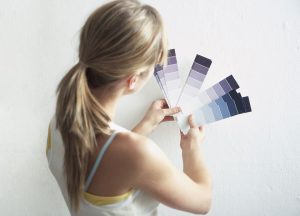Color of Choice…Here’s a few Pointers
Learn how to implement the hot colors of 2018.
Forecasters predict:
Color can impact the overall mood of your surroundings as well as what potential buyers feel when they step inside your home. The challenge comes in choosing the right combination for your particular space. You want it to be inviting and warm.
Hues to Use
Experts from Pantone, Sherwin Williams and other companies make annual paint color predictions based on global themes. Hues such as BEHR’s color of the year, In the Moment, along with its peaceful palette, focus on people’s need to unplug from an over connected world. Similar shades like Equilibrium and Off the Grid also promote a sense of serenity.
The Light and the Dark
Contrasting light and dark colors is a great way to create dynamism in your home decor. The lighter the shade, the more spacious the appearance. If your furniture or flooring is primarily neutral, adding dark colors to the mix can bring balance and help create attractive focal points.
Capitalizing on Color
Our mood is subtly yet consistently influenced by the colors around us. For example, soothing shades such as the powdery blue Casual Day can help you unwind and relax after a long day at work. Conversely, vibrant deep oranges like Civara invigorate and promote an optimistic tone.
Pointers for Color Pops
Both fun and formal spaces are equally enhanced by accents. Whether you use them to highlight a unique architectural feature or tie an area together, the trick is to be strategic. In design, the 60-30-10 rule is a well-known way to bring balance to a room.
What is the 60-30-10 Rule?
You don’t need to be a mathematician to use the 60-30-10 rule in your decor, nor do you need a ruler or a calculator. The rule simply states that for the most balanced, appealing look, you should choose a three-color palette for decorating a room, and use it as follows:
- Decorate 60% of the room with the dominant color
- Decorate 30% of the room with the secondary color
- Use the remaining color as an accent in 10% of the space
Like all decorating guidelines, the rule is not written in stone, just follow the basic idea: one dominant color for the majority of the space, a secondary color that fills roughly half as much space as the dominant color, and a third color to add splashes of interest around the room.


